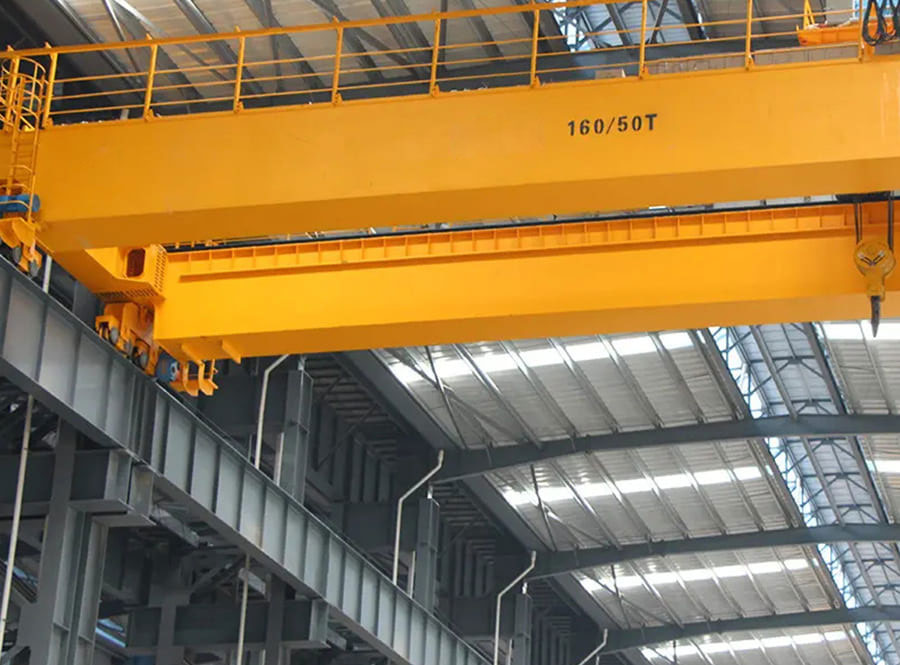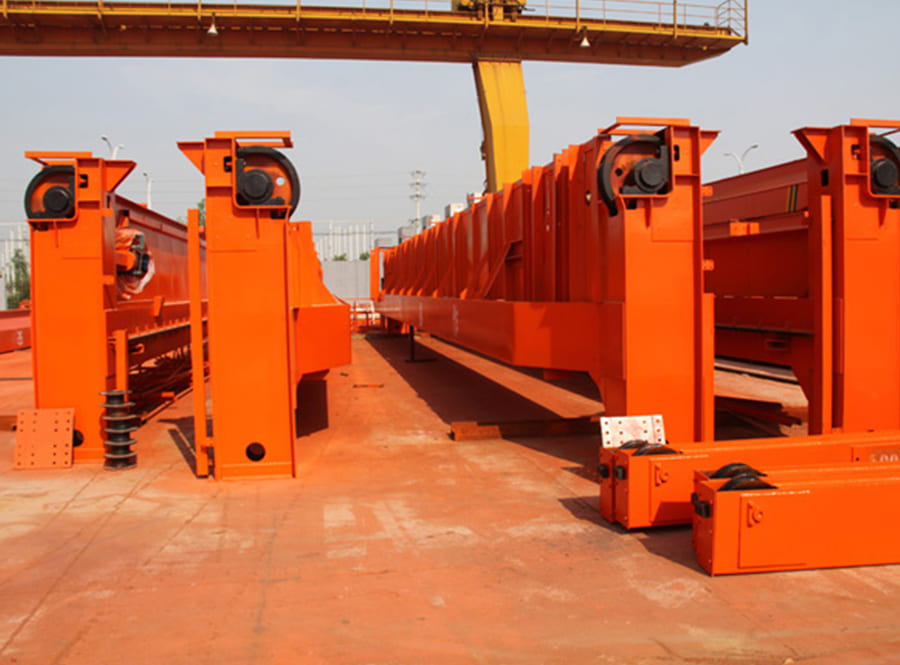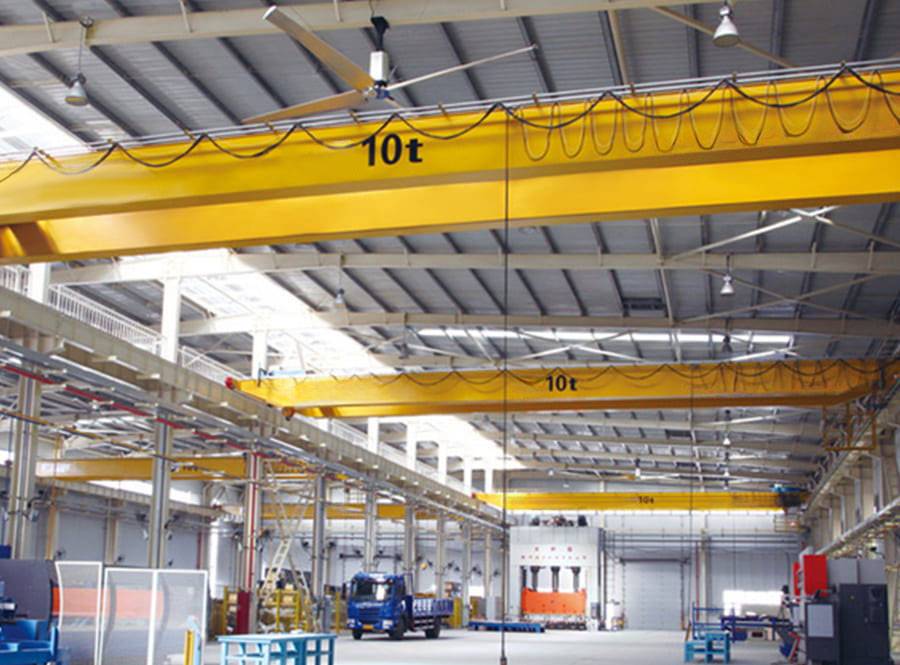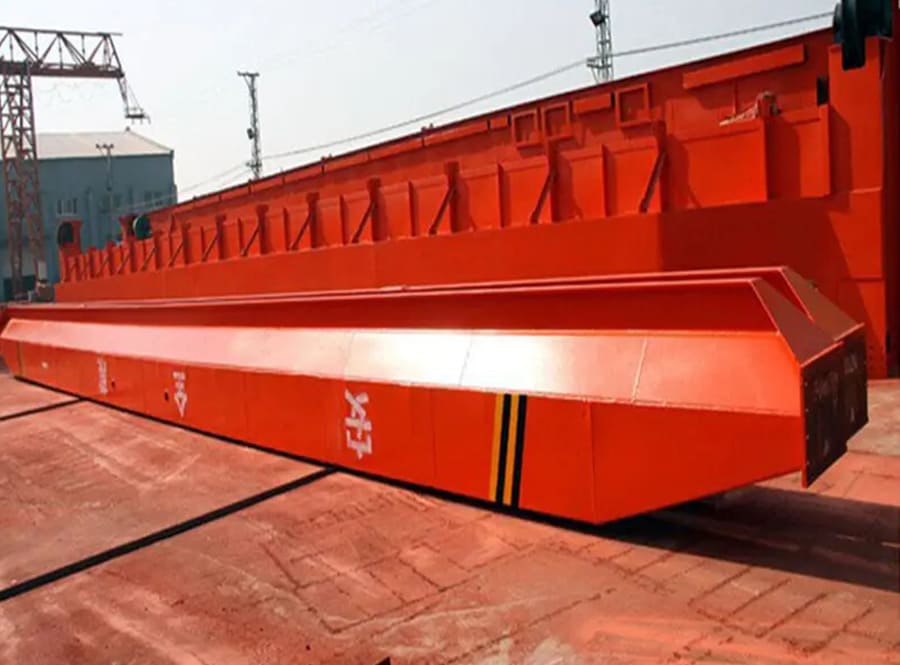桥式起重机 systems are integral to material handling operations in a wide range of industrial settings. These robust and versatile systems provide efficient lifting and transportation of heavy loads, contributing to increased productivity and optimized workflows. In this article, we will explore the features, benefits, and applications of overhead crane systems, highlighting their role in streamlining material handling processes.

- 定义和组成部分:
一个 桥式起重机 system, also known as a bridge crane or overhead traveling crane, is a complex setup consisting of several key components. These include a bridge (or runway), end trucks, hoist or lifting mechanism, trolley, and controls. The bridge spans the width of the facility and is supported by end trucks on either side. The lifting mechanism, usually a hoist, is mounted on a trolley that travels horizontally along the bridge, providing vertical lifting and horizontal movement capabilities. - Heavy Load Capacity:
One of the primary advantages of overhead crane systems is their ability to handle heavy loads. These systems are designed to lift and transport loads ranging from a few tons to several hundred tons, depending on their configuration and specifications. This makes overhead crane systems ideal for industries such as manufacturing, construction, steel, automotive, and logistics, where efficient handling of heavy items is essential. - Improved Efficiency and Productivity:
Overhead crane systems significantly enhance efficiency and productivity in material handling operations. With their precise controls and smooth movement, these systems enable operators to lift, transport, and position loads with ease. Overhead crane systems eliminate or reduce manual labor, reducing the time and effort required to move heavy items. This streamlined process optimizes workflows, increases throughput, and enhances overall operational efficiency. - 多功能性和定制性:
桥式起重机 systems can be customized to meet specific operational requirements. They can be tailored in terms of span, lifting capacity, lifting height, and additional features such as specialized lifting attachments or automation capabilities. This versatility allows businesses to optimize the crane system to match their unique material handling needs, ensuring maximum efficiency and adaptability. - Enhanced Safety:
Safety is a paramount concern in industrial environments, and overhead crane systems are designed with numerous safety features to mitigate risks. These features may include overload protection, emergency stop buttons, limit switches to prevent over-travel, anti-collision devices, and safety devices to prevent the crane from operating outside its designated area. Proper training and adherence to safety protocols are essential for safe and secure material handling operations. - 应用:
Overhead crane systems find applications across a wide range of industries and tasks. They are commonly used in manufacturing facilities for lifting and moving heavy machinery, components, and raw materials. In construction sites, overhead crane systems are utilized for lifting and placing construction materials and equipment. Industries such as logistics and warehousing rely on overhead crane systems for efficient loading and unloading of goods. - Increased Floor Space Utilization:
桥式起重机 systems utilize the vertical space in a facility, freeing up valuable floor space. By lifting and transporting loads overhead, these systems enable efficient use of the available workspace. This allows for the installation of other equipment, workstations, or storage areas on the ground, optimizing the overall layout and maximizing productivity. - 维护和耐用性:
Regular maintenance and inspections are crucial for the optimal performance and longevity of overhead crane systems. Lubrication of moving parts, periodic checks of safety mechanisms, and addressing any signs of wear or damage contribute to the reliability and durability of the system. With proper care and maintenance, overhead crane systems can provide years of efficient and reliable service.

结论:
桥式起重机 systems play a vital role in streamlining material handling processes in industrial environments. Their heavy load capacity, improved efficiency, versatility, and safety features make them indispensable tools for lifting and transporting heavy loads. By incorporating overhead crane systems into their operations and prioritizing maintenance and safety, businesses can optimize material handling workflows, enhance productivity, and ensure safe and efficient operations.





















